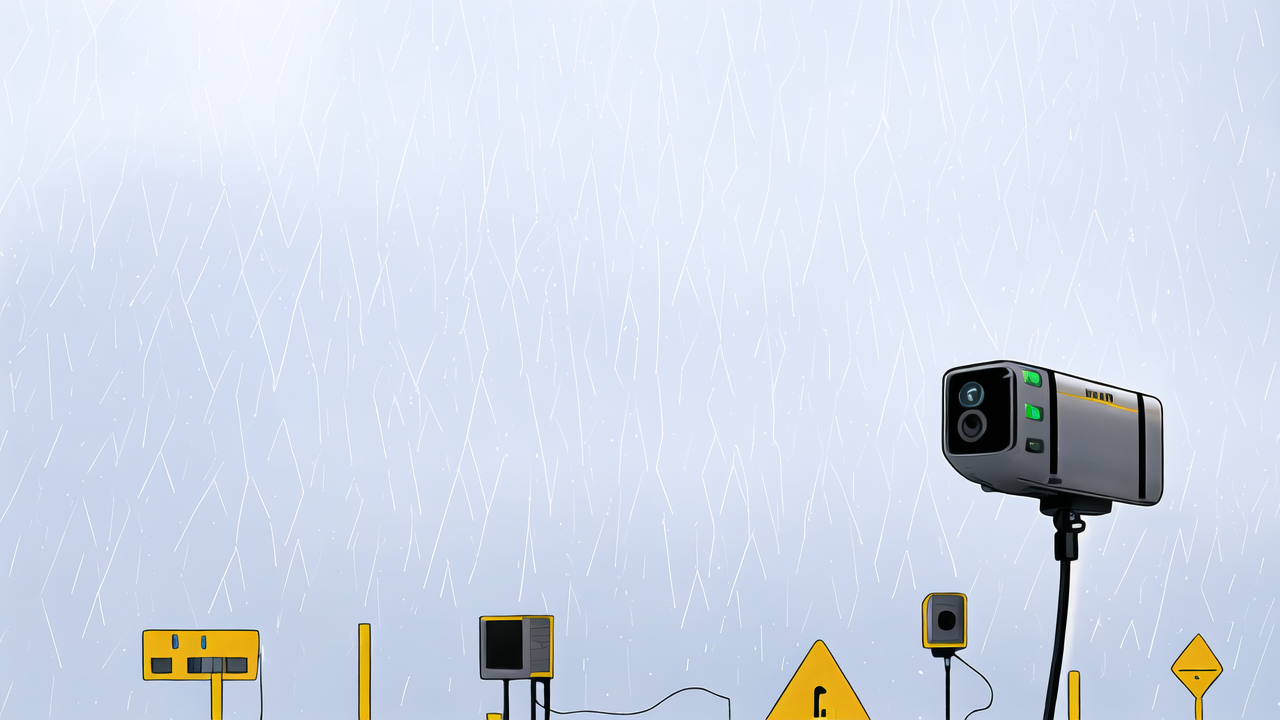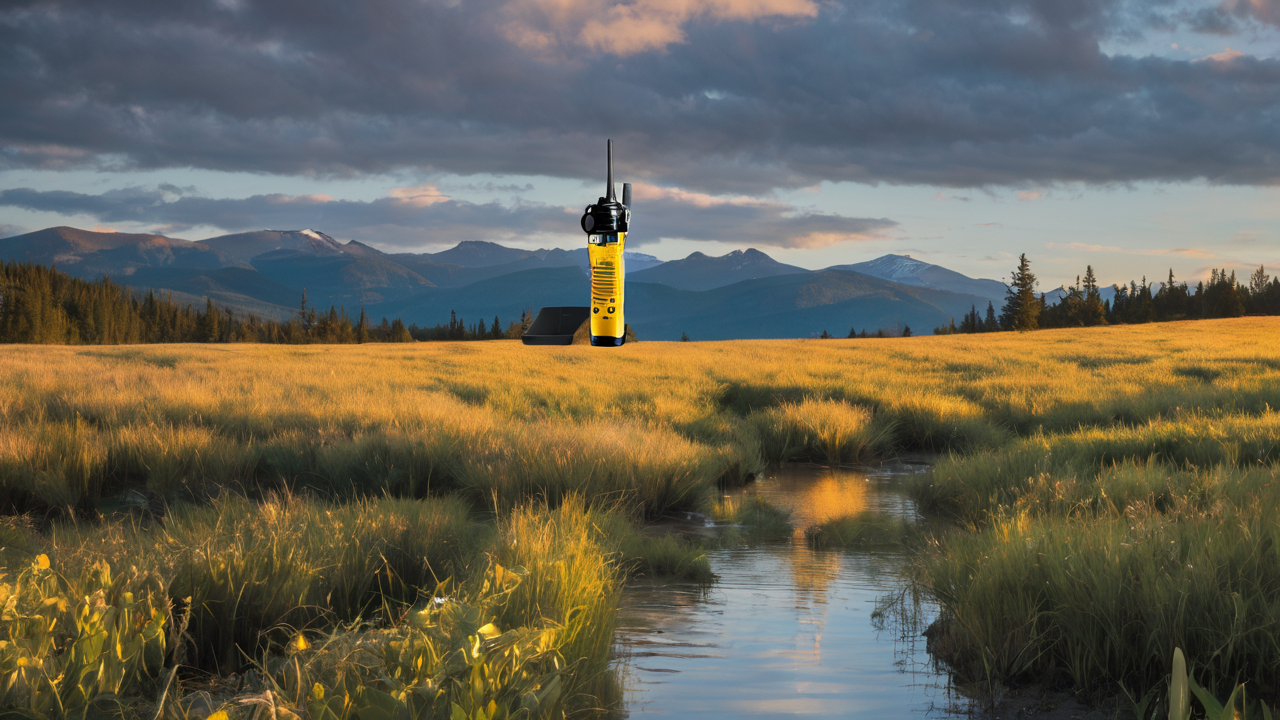Understanding Long Range Walkie Talkies: A Buyer's Guide
Evaluating Performance and Range
Long range walkie talkies are essential for many outdoor activities. They offer communication over vast distances.

The range depends on several factors. These include terrain, weather, and obstacles.
Most walkie talkies can't reach 1000 miles. This claim is often exaggerated. In reality, the range is much shorter.
However, some high-end models can achieve impressive distances. They use advanced technology to boost their range.
To evaluate performance, consider real-world tests. Look for reviews from users in similar environments to yours.
Remember, clear line of sight is crucial for maximum range. Obstacles like buildings or mountains reduce effectiveness.
Key Features to Look for in Long Range Walkie Talkies
When choosing long range walkie talkies, several features are important:
- Battery life: Long-lasting batteries are crucial for extended use.
- Durability: Look for water-resistant or waterproof models for outdoor use.
- Channel options: More channels mean less interference.
- Privacy codes: These help ensure secure communication.
- Voice activation: Hands-free operation can be very useful.
- Weather alerts: Some models provide emergency weather information.
- GPS functionality: This can be helpful for tracking and navigation.
- Noise cancellation: This improves audio quality in loud environments.
Consider which features matter most for your needs. High-end models often offer more features but at a higher price.
The Importance of Frequency and Power in Long Range Communication
Frequency and power are crucial for long range communication. Most walkie talkies use either UHF or VHF frequencies.
UHF works better in urban areas with obstacles. VHF is better for open areas with fewer obstructions.
Power affects how far the signal can travel. Higher wattage generally means longer range. However, more power also
means faster battery drain. Balance your need for range with battery life requirements.
Some long range walkie talkies use repeaters to extend their range. These devices receive and retransmit signals.
They can significantly increase the effective range of your walkie talkies.
The Best Long Range Walkie Talkies on the Market
Review of the Top 5 Long Range Walkie Talkies
- Midland GXT1000VP4: Known for its 36-mile range and 50 channels.
- Motorola T605: Offers a 35-mile range and is fully waterproof.
- Cobra ACXT1035R FLT: Boasts a 37-mile range and floating design.
- BaoFeng UV-5R: Popular among enthusiasts for its programmability.
- Uniden SX377-2CKVP: Features a 37-mile range and 22 channels.
These models offer the best balance of range, features, and reliability. Each has its strengths and weaknesses.

Consider your specific needs when choosing between them.
Technical Specifications and Pros of Leading Brands
Midland GXT1000VP4:
- Range: Up to 36 miles
- Channels: 50
- NOAA weather alerts
- Waterproof
Pros: Great range, many channels, weather alerts
Motorola T605:
- Range: Up to 35 miles
- Channels: 22
- Fully waterproof (IP67 rated)
- Built-in flashlight
Pros: Durable, good for water activities
Cobra ACXT1035R FLT:
- Range: Up to 37 miles
- Channels: 22
- Floats in water
- Built-in LED flashlight
Pros: Great for water use, good range
BaoFeng UV-5R:
- Dual-band (VHF/UHF)
- Programmable
- Wide frequency range
Pros: Versatile, popular among enthusiasts
Uniden SX377-2CKVP:
- Range: Up to 37 miles
- Channels: 22
- JIS7 waterproof
- Direct call feature
Pros: Good range, waterproof, direct calling
User Experiences and Tales from the Field
Many users report positive experiences with these long range walkie talkies. However, actual range often falls short
of advertised claims. This is due to real-world conditions affecting signal propagation.
One hiker reported using the Midland GXT1000VP4 in mountainous terrain. They achieved clear communication up to 10
miles. This was less than the advertised range but still impressive given the challenging environment.
A group of campers praised the Motorola T605 for its durability. They accidentally dropped it in a lake but it
continued to work perfectly. The waterproof feature proved invaluable in this situation.
Boaters have found the Cobra ACXT1035R FLT particularly useful. Its floating design makes it easy to recover if
dropped overboard. Users appreciate this feature for marine activities.
Amateur radio enthusiasts often choose the BaoFeng UV-5R. They value its programmability and wide frequency range.
However, some find it complex to set up initially.
The Uniden SX377-2CKVP received praise for its clear audio quality. Users reported good performance in both urban
and rural settings. The direct call feature was highlighted as particularly useful.
Legal and Ethical Considerations of Long Range Walkie Talkies in the United States
Navigating Regulations: FCC and State Laws
In the United States, the use of long range walkie talkies is regulated by the FCC. Users must comply with these

rules:
- Most walkie talkies operate on FRS or GMRS frequencies.
- FRS doesn't require a license, but has power limitations.
- GMRS requires a license but allows higher power output.
- Some frequencies are restricted to licensed amateur radio operators.
State laws may also apply to walkie talkie use. Always check local regulations before use. Some areas have
restrictions on radio use in certain locations or during specific times.
Ethical Use and Privacy Concerns
Using long range walkie talkies comes with ethical responsibilities. Users should:
- Respect others' privacy. Don't eavesdrop on private conversations.
- Use appropriate language. Remember, others may overhear your transmissions.
- Keep conversations brief. Don't monopolize channels unnecessarily.
- Use designated channels for emergencies only as intended.
- Be mindful of noise pollution in natural areas.
Privacy is a concern with any radio communication. Encryption is generally not allowed on public frequencies.
Be aware that others may listen to your conversations. Avoid sharing sensitive information over walkie talkies.
Best Practices for Amateur Radio Enthusiasts
Amateur radio enthusiasts should follow these best practices:
- Obtain proper licensing before operating on restricted frequencies.
- Regularly check for updated regulations and comply with them.
- Use the minimum power necessary for communication to reduce interference.
- Identify yourself using your call sign as required by regulations.
- Participate in emergency preparedness exercises and offer assistance when needed.
- Mentor newcomers to the hobby and promote responsible radio use.
- Respect band plans and frequency allocations.
- Keep equipment well-maintained to ensure clean signal transmission.
By following these guidelines, enthusiasts can enjoy their hobby while respecting laws and others' rights.
Responsible use ensures continued access to radio frequencies for all users.


